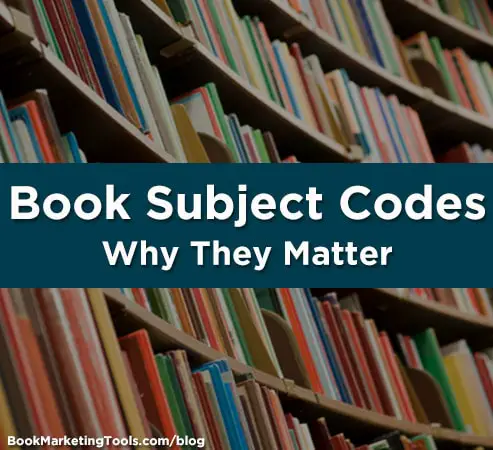Have you ever read a book’s description and wondered whether the book was fiction or a true story? I have.
Often, the description of a book, alone, does not clarify whether a book is a fiction or true story, whether the book is a memoir or a self-help, whether the book is a young adult novel or an adult novel. Enter BISG’s BISAC Subject Codes.
For those who are not familiar, BISG stands for the Book Industry Study Group, Inc. It is the leading trade association for standardized best practices, research and information, and events for the book industry.
BISAC Subject Codes (also called Subject Headings) are administered by BISG. These codes were created for books. They are a classification system for both physical and digital products. Their purpose is to give anyone looking at a book—retailers, librarians, distributors, reviewers, and readers—a clear definition of a book’s content.
For consumers, these Subject Codes let them know what type of book they are looking at. Yes, they discovered the book in the fiction section of a bookstore or library, but is this book an historical fiction, a romance, or a mystery novel? For booksellers these Subject Codes tell them where to shelve the book in their store. Do they place the nonfiction book they hold in their hands under devotionals, biographies, or parenting? These headings also determine the genre(s) under which a book can be searched for in an online database.
BISAC Subject Codes are found on a book’s back cover, usually in the upper left-hand corner, but they can also be listed in the lower right-hand corner either above or below the EAN barcode. Traditional publishers all use them on their books. However, I have found that many independently published authors and small publishers do not include these subject codes on their books.
BISAC Subject Codes are a list of industry-approved subject descriptors, which consist of two, three, or four levels of information such as:
- YOUNG ADULT FICTION / Fantasy / Contemporary
- HISTORY / Military / General
- JUVENILE NONFICTION / Poetry / Humorous
- FICTION / Christian / Historical
If you have not used BISAC Subject Codes on your books, plan to do so with future editions. You can include the BISAC Subject Codes for your books in your online descriptions as well as the back cover of your book. Using BISAC Subject Codes can provide the following benefits:
- Enhance your current titles’ discoverability.
- Improve your market intelligence.
- Increase your selling potential.
- Maintain visibility of back-list titles.
Access to the complete approved list of BISAC Subject Codes is free. They are also free to use. The Codes can be found on BISG’s website a t http://bisg.org/page/BISAC2015Edition. The organization updates the codes regularly.
If you are not familiar with the BISAC Subject Codes, I encourage you to head on over to the website and check them out. Then use them to improve discoverability and sales conversions for your next book. Use these codes to pick the best categories possible when publishing on Amazon to get your book into the most accurate category.
Sarah Bolme is the author of the award-winning Your Guide to Marketing Books in the Christian Marketplace (www.marketingchristianbooks.com), now in its third edition. As the Director of Christian Small Publishers Association (www.christianpublishers.net) she helps independent authors and small publishers market their books in the Christian marketplace.

